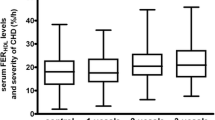Abstract
Objective
To explore the relationship of Pi (脾)-deficiency syndrome in TCM with the change of serum high density lipoprotein (HDL) in blood lipid metabolic disorder.
Methods
Sixty-eight patients with confirmed coronary heart disease (CHD) were selected for TCM syndrome typing into Pideficiency (PD) group and non-Pi-deficiency (NPD) group. Routine blood lipids and serum lipoprotein electrophoretogram (SLPG) were determined in all patients to analyze the total content of HDL and its relative contents of sub-components HDL1–5, as well as their relation with PD syndrome. Besides, a healthy control group (62 cases) was set up.
Results
The level of serum HDL-C was lowered, SLPG abnormality rate increased in the patients with CHD, with total HDL and the relative contents of subcomponent HDL1 and HDL3 significantly lower than those in the healthy control group (P<0.01). The total HDL, HDL1 and HDL3 in the PD group were also lower than those in the NPD group (P<0.05, P<0.01).
Conclusion
Serum HDL and its sub-components showed a definite relation with TCM PD syndrome type, therefore, further exploring the granular specificity of HDL and its sub-components as well as their influence on reverse cholesterol transport (RCT) may hopefully provide clues for developing RCT regulatory Chinese new drugs and for CHD prevention and treatment.
Similar content being viewed by others
References
Special Committee of Chinese Association of Integrative Medicine on Cardiovascular Disease. Syndrome Differentiation of Coronary Heart Disease in Traditional Chinese Medicine. Chin J Integr Tradit Chin Med 1991; 11(5): 257.
Association of Laboratory Medicine, Chinese Medical Association. Recommended method IV in blood lipid determination. Determination method of serum HDL-C (draft). Chin J Lab Med 1995; 18(5): 311–312.
Zhang M, Li XM, Yin BS, et al. Elementary observation of serum lipoprotein separation by double gradient acrylamide gel electrophoresis. J Fourth Milit Med Univ 1993; 13(S2): 535.
Zhang M, Li XM, Yin BS. Primary exploration on modified double gradient acrylamide gel electrophoresis. 1994; 19(1): 25.
Zhang M, Yin BS, editors. Therapeutics of hyperlipidemia by integrated traditional Chinese and Western medicine. Beijing: People’s Military Medical Press, 2001: 236–248.
Rye KA, Barter PJ. Formation and metabolism of prebetamigrating, lipid-poor apolipoprotein A-I. Arterioscler Thromb Vasc Biol 2004; 24: 421–428.
Yang XJ, Zhang C, Zhao B. Clinical observation on treatment of 60 cases of hyperlipemia based on treatment of Spleen first. Beijing J Tradit Chin Med 2006; 25(1): 11–13.
Xie B. Clinical observation of 50 cases of hyperlipidemia treated by Shenling Baizhu Powder. Forum Tradit Chin Med 2000; 15(1): 31.
Cui CX, Cui CR. 168 cases of hyperlipidemia treated by principle of soothing Gan, invigorating Pi and sputum removing. Henan Tradit Chin Med 2006; 26(2): 38.
Author information
Authors and Affiliations
Additional information
Supported by Guangdong Provincial Natural Science Foundation (No. 06024432) and Scientific Project of Administration of Traditional Chinese Medicine of Guangdong Province (No. 2060128)
Rights and permissions
About this article
Cite this article
Liang, Dh., Chen, Yq., Li, Zl. et al. Study on the relationship between serum high density lipoprotein and Pi-deficiency syndrome in patients with coronary heart disease. Chin. J Integ. Med. 13, 125–127 (2007). https://doi.org/10.1007/s11655-007-0125-6
Received:
Issue Date:
DOI: https://doi.org/10.1007/s11655-007-0125-6




